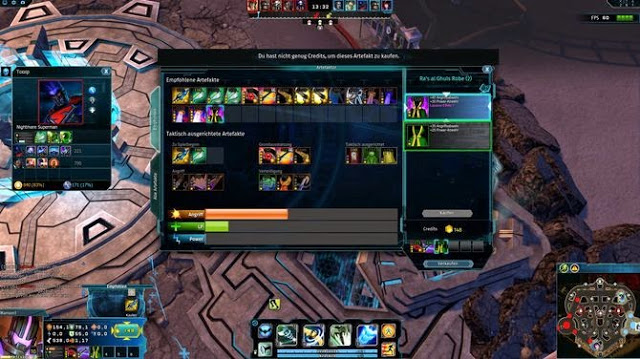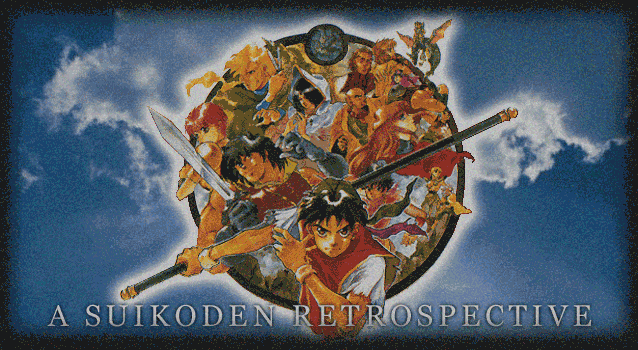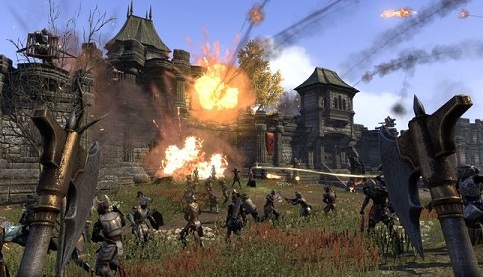

After successfully rejuvenating Killer Instinct for the next-gen crowd, developer Double Helix Games firmly established themselves as the current reboot king. So, when they announced plans to update the arcade classic Strider for current and next-gen platforms, anticipation was understandably high.
While not a clear-cut remake of the original Strider, this 2014 version bears some striking similarities to its namesake — a smart move on Double Helix‘s part. From the no frills storyline to the bosses to the gameplay, Strider feels like an HD update done right: a combination of modern mechanics and gameplay setup, packaged around a familiar character and universe.
With little in the way of a prologue, Strider thrusts players headfirst into the action. Players once again take control of Hiryu, one of the last remaining striders: a breed of cybernetic ninjas with lightning quick reflexes and a deadly skill set. While Hiryu’s basic goal of infiltrating a Kazakh military infiltration and assassinating Grandmaster Meio might seem simple, accomplishing said task is easier said than done.
In the most basic sense, Strider is a Metroidvania-style game, a side scroller where progression walks hand-in-hand with acquiring new abilities, and will draw direct comparisons to games like Shadow Complex. Players are presented with an interconnected set of levels and paths — all bursting with color and a slick techno-Chinese art style — many of which are only accessible once players acquire a new ability by defeating a boss. It’s a formula that’s been refined time and time again, and even though Strider doesn’t add anything new to the equation, it leverages the conceit well. And by the time the credits roll, Hiryu’s arsenal will have grown to include things like throwing knives, various sword attacks (magnetic, plasma, reflecting), and a handful of movement options like your basic double jump or dash.
Combat in Strider is of the straightforward action platformer variety – i.e. when players aren’t jumping or scaling walls they’re mashing the attack button. The game does give the sense that Hiryu is a skilled fighter, but unfortunately that means few enemies, especially the basic robotic soldier and aerial drone, actually pose any few challenge. For that matter, even when the game starts throwing new abilities player’s way, they are still in most cases, mashing attack and holding forward. Hiryu’s actions might get a little more colorful or powerful, but the base combat doesn’t change much as players progress.
On a similar note, the enemy variety in Strider is a little lacking. Sure, the game changes the colors of the drone or soldier – a hint that a different ability or attack is required – but players will spend a lot of time mashing their way through similar combatants over and over with little consideration for their design. There are enemies beyond those basic types, ones that in addition to a change of pace actually require a little strategy, but most of them are actually weaker versions of the game’s mini-bosses.
The game’s true bosses, on the other hand, are the real joy of Strider. With almost a dozen in total, Strider‘s main foes are the stuff of arcade legend. Every boss, be it the building-size tank or the human-sized flying robot requires its own unique, equal-parts recipe of pattern and attack memorization, which is appropriately followed up by a quick barrage of your own attacks. Each boss brings something fresh and new to the table, and all are uniquely designed to fit into the game’s overarching art style. Most importantly, the bosses are challenging enough to get the player’s pulse pounding, but not enough to be frustrating.
Along the same lines as the bosses, Strider boasts a handful of creative level types that break up the monotony of “enter area, kill enemies, and advance”. Unfortunately, those levels almost exclusively fall on the back-end of the game’s 5-hour completion time, and would have been better served layered throughout the entire experience. The way the game plays around with gravity, for example, adds a smart dynamic to combat and traversal, but is criminally underutilized. Same goes for a late-game sky level, which uses wind velocity to alter the game’s basic platforming.
There are several incentives to keep the game’s experience going after the last boss, including harder difficulty setting and an objective-based challenge mode. Those who pick through the game on their first go-round – collecting all of the game’s various health, energy, and throwing knife upgrades – will find themselves sufficiently satisfied, but the replayability is there for players who want it.
As a complete package, Strider offers engaging but basic gameplay, a crisp clean art style, and boss battles that fit perfectly into the Metroidvania genre. It would have been nice if the game added something new to the genre, but as it stands Strider is an excellent entry all the same. In other words, fans of Metroid, Castlevania, Shadow Complex, or any games of that ilk should seek this one out immediately. It has its flaws, but they are easy to overlook because the game is just plain, unadulterated fun. In fact, the only thing that would make the game more enjoyable is playing in an actual arcade setting.
Have you had a chance to play Strider? What do you think? Let us know in the comments below.
Strider is available now for the PC, PS3, PS4, Xbox 360, and Xbox One. Game Rant was provided a PC code for this review.
_____
Follow Anthony on Twitter @ANTaormina




 These Simplicities: A Suikoden Retrospective
These Simplicities: A Suikoden Retrospective XCOM: Enemy Unknown Strategy Guide: How To Survive
XCOM: Enemy Unknown Strategy Guide: How To Survive Review: Sloppy Ninja
Review: Sloppy Ninja ESOTU (PS4/Xbox One) Racial Bonuses and Factions
ESOTU (PS4/Xbox One) Racial Bonuses and Factions 4 Message Boards to Talk with Other PlayStation Fans
4 Message Boards to Talk with Other PlayStation Fans